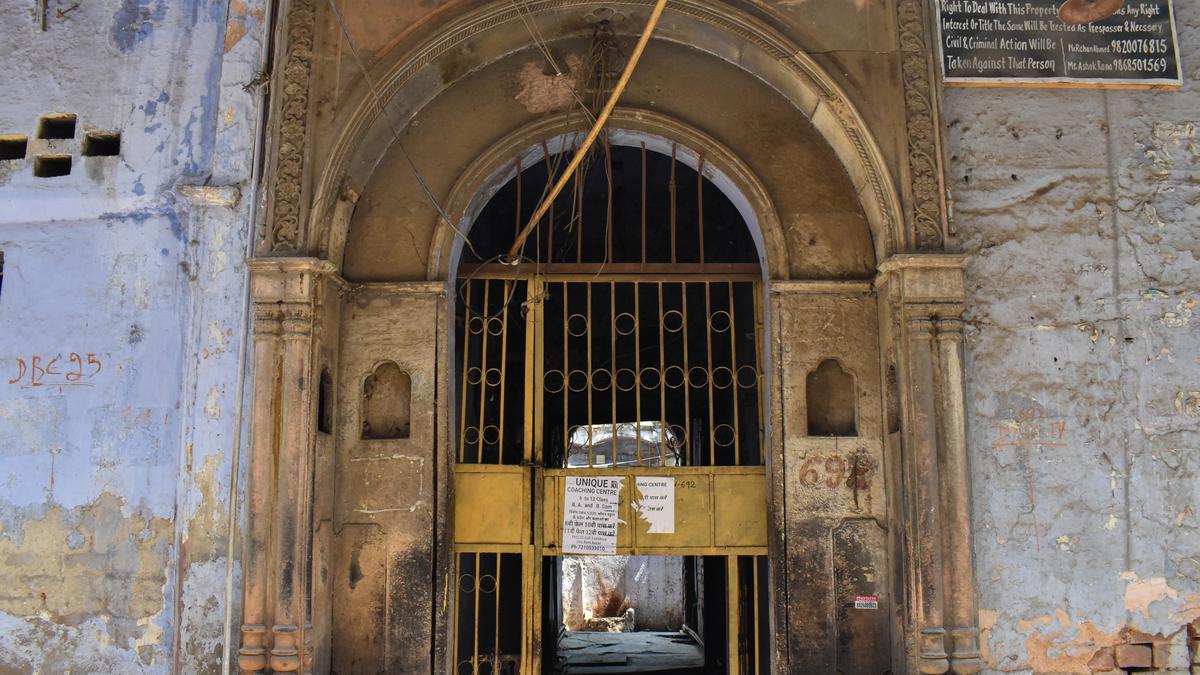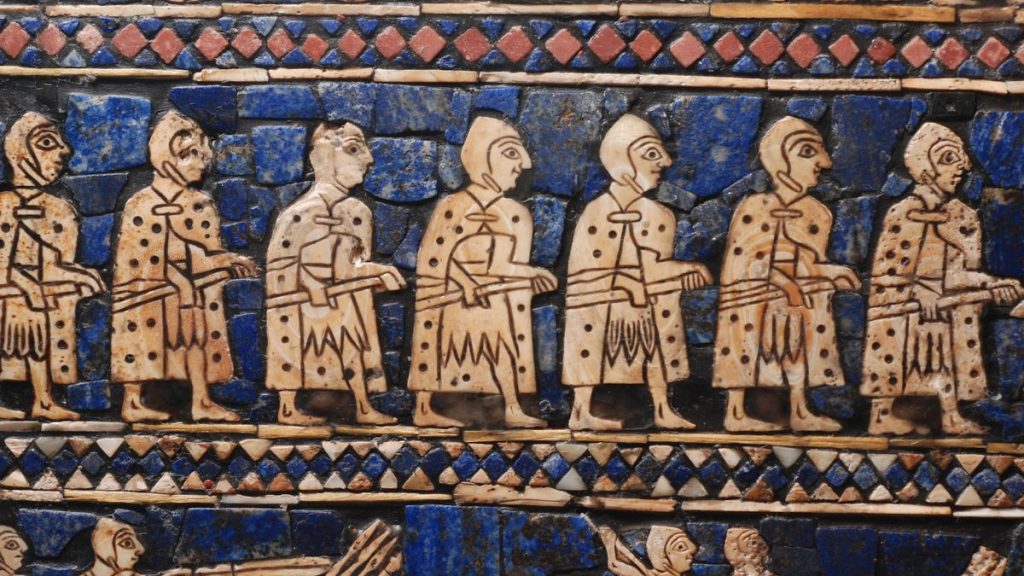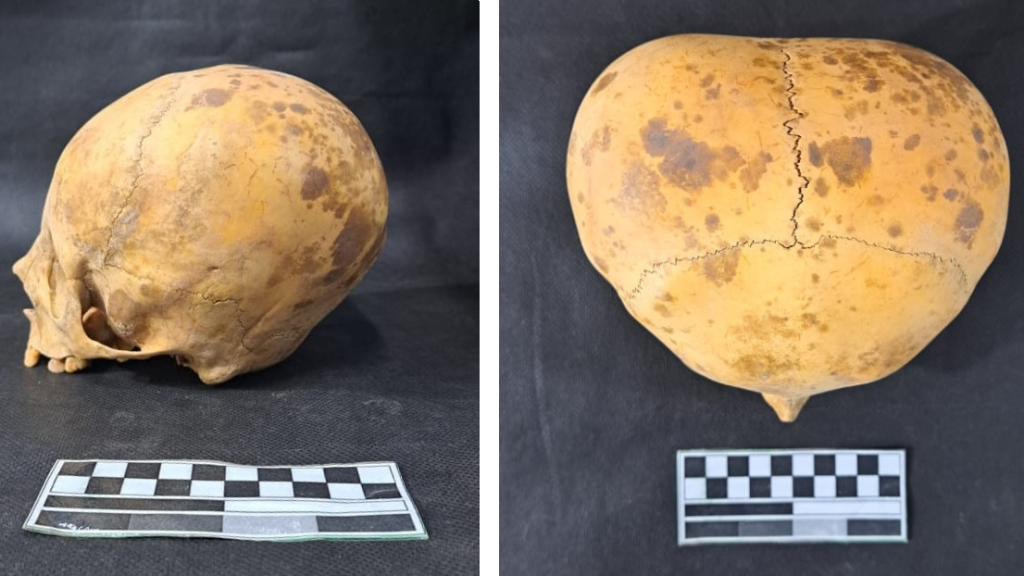Tucked in the twisting lanes of Purani Dilli, where every corner hides a forgotten tale, stands the crumbling haveli of a legend — the ancestral home of actor Saira Banu. The haveli rests in quiet decay near Ajmeri Gate, a few metres from Shradhanand Marg, formerly GB Road.
The entrance to the haveli is worn but is a reminder of its once regal and majestic arch that has now weathered with time. The original blue walls have faded, the stone pillars are chipped. The entrance gate, painted yellow, is rusty but firm.
The sepia-toned walls where patterns carved in stone are reminders that the place was once grand and beautiful, the weathered jharokhas, the dilapidated balconies, and blue-toned wooden darwazas (doors) try to keep alive a faint picture of the past. The spacious courtyard, the intricate staircases and expansive terraces are a reflection the fading architectural splendour of a bygone era.
Imagination takes wing as you walk into the haveli that opens into a courtyard perhaps once filled with the sound of Saira Banu’s childhood giggles; her mother Naseem Banu’s youth and; the soft clink of her grandmother’s anklets, carrying the scent of attar and the gentle sound of music in the air. Saira Banu’s grandmother was a prominent tawaif of her times.
A story in every crack and corner of Saira Banu haveli
| Photo Credit:
Priya Prakash
Today, the haveli shelters two families who came from Lahore during the Partition. The third generation of the migrant families live now, above the grandeur that once entertained nawabs and colonial officers. Sitting on a plastic stool outside her room, Priya Kapoor, a widowed mother of two, recounts stories passed down to her.
At present, 10 people, a dog, and two hens share the space, she says.“My mother-in-law, would speak of Saira Banu’s grandmother with much love and respect,” says Priya. “She was a woman of grace,” she says.
At present, 10 people, a dog, and two hens share the space, she says.
Chhamiya Bai, Saira Banu’s maternal grandmother, was known for her humility and kindness. The hall on the first floor, where she once performed mujra, remains untouched and under lock. Her daughter, Naseem Banu, spent her youth in the haveli till cinema called her to Bombay, and she went on to become one of Hindi cinema’s first female superstars
Priya says she grew up watching Saira Banu in Hindi films and adds how special it feels to live in the house where the actress spent the first four years of her life. Many might question the safety of a woman and her two daughters living near what was once Delhi’s red-light district. But Priya insists otherwise. “It’s safer than people think. My daughter goes alone for daily tuitions in the evening and we’ve never faced any trouble,” she says.
A story in every crack and corner of Saira Banu’s haveli
| Photo Credit:
Priya Prakash
Few who walk down the narrow lanes of Ajmeri Gate in Purani Dilli know that behind one of its old darwazas, there lived stars once upon a time. But most are not aware that the haveli intertwines the golden period of Indian cinema and the tumultuous history of Shahjahanabad (Old Delhi). The only indication of the haveli’s legacy is a board at the entrance, which reads, ‘This property belongs to Mrs Saira Banu Khan and Mr Rehan Ahmed.’ Rehan is Saira Banu’s nephew (her brother’s son) who lives in London.
It is kind of poetic that the queen of hearts and her mother, once the epitome of cinematic beauty and elegance, spent their crucial formative years in a haveli which is at least 150 years old. It stands quietly as a remnant of cinematic and historical grandeur slowly withering from memory. The haveli is no ordinary relic from the past, but a living piece of history that contributed to the evolving narrative of Old Delhi, with its stories, tragedies and triumphs.
A weathered door and a makeshift ladder from the years gone by
| Photo Credit:
Priya Prakash























